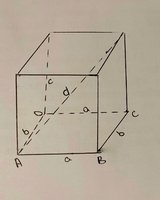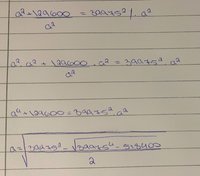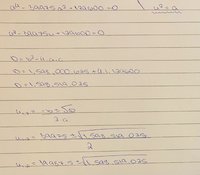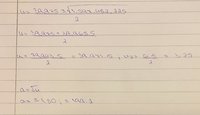Can someone tell me where to start solving this?
I have a right parallelepiped; c (side of the base) = 5 cm; B (base area) = 360 sq. cm; d (diagonal) = 200 cm.
I need to find a and b (sides of the base); S (surface area); V (volume)
All of the formula's I have aren't working because I don't know what a and b are...
I have a right parallelepiped; c (side of the base) = 5 cm; B (base area) = 360 sq. cm; d (diagonal) = 200 cm.
I need to find a and b (sides of the base); S (surface area); V (volume)
All of the formula's I have aren't working because I don't know what a and b are...




